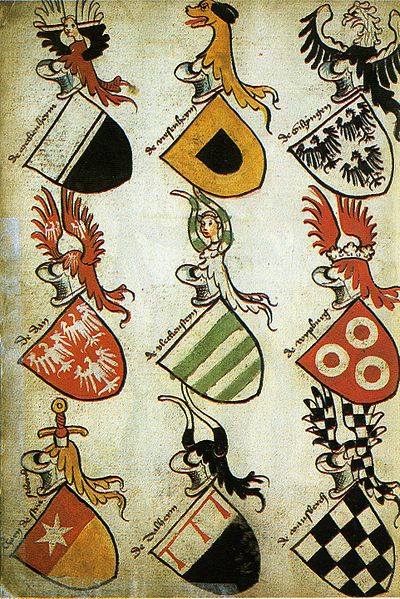Coat of arms of Czechoslovakia
The coat of arms of Czechoslovakia were changed many times during Czechoslovakia’s history, some alongside each other. This reflects the turbulent history of the country and a wish to use appropriate territorial coats of arms.
Coat of arms of the Czechoslovak National Council in Paris before creation of Czechoslovakia. (1916–1918).
A coat of arms is a heraldic visual design on an escutcheon, surcoat, or tabard. The coat of arms on an escutcheon forms the central element of the full heraldic achievement, which in its whole consists of a shield, supporters, a crest, and a motto. A coat of arms is traditionally unique to the armiger. The term "coat of arms" itself, describing in modern times just the heraldic design, originates from the description of the entire medieval chainmail "surcoat" garment used in combat or preparation for the latter.
Coats of Arms in the Dering Roll, an English armorial from the 13th century
Brabant Lion held by Floris de Merode during the funeral of Albert VII, Archduke of Austria, print after design by Jacob Franquart
The German Hyghalmen Roll, c. late 15th century, illustrates the German practice of thematic repetition from the arms in the crest
Arms of the Duke of Richmond c. 1780





